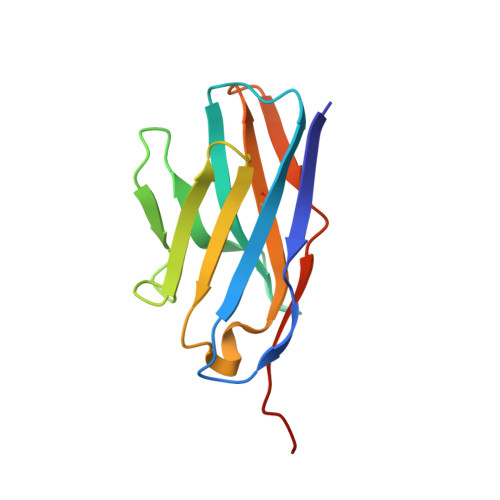Broadly neutralizing and protective nanobodies against SARS-CoV-2 Omicron subvariants BA.1, BA.2, and BA.4/5 and diverse sarbecoviruses.
Li, M., Ren, Y., Aw, Z.Q., Chen, B., Yang, Z., Lei, Y., Cheng, L., Liang, Q., Hong, J., Yang, Y., Chen, J., Wong, Y.H., Wei, J., Shan, S., Zhang, S., Ge, J., Wang, R., Dong, J.Z., Chen, Y., Shi, X., Zhang, Q., Zhang, Z., Chu, J.J.H., Wang, X., Zhang, L.(2022) Nat Commun 13: 7957-7957
- PubMed: 36575191
- DOI: https://doi.org/10.1038/s41467-022-35642-2
- Primary Citation of Related Structures:
7X2J, 7X2K, 7X2L, 7X2M - PubMed Abstract:
As SARS-CoV-2 Omicron and other variants of concern (VOCs) continue spreading worldwide, development of antibodies and vaccines to confer broad and protective activity is a global priority. Here, we report on the identification of a special group of nanobodies from immunized alpaca with potency against diverse VOCs including Omicron subvariants BA.1, BA.2 and BA.4/5, SARS-CoV-1, and major sarbecoviruses. Crystal structure analysis of one representative nanobody, 3-2A2-4, discovers a highly conserved epitope located between the cryptic and the outer face of the receptor binding domain (RBD), distinctive from the receptor ACE2 binding site. Cryo-EM and biochemical evaluation reveal that 3-2A2-4 interferes structural alteration of RBD required for ACE2 binding. Passive delivery of 3-2A2-4 protects K18-hACE2 mice from infection of authentic SARS-CoV-2 Delta and Omicron. Identification of these unique nanobodies will inform the development of next generation antibody therapies and design of pan-sarbecovirus vaccines.
Organizational Affiliation:
Center for Global Health and Infectious Diseases, Comprehensive AIDS Research Center, NexVac Research Center, Department of Basic Medical Sciences, School of Medicine, Tsinghua University, Beijing, 100084, China.
















